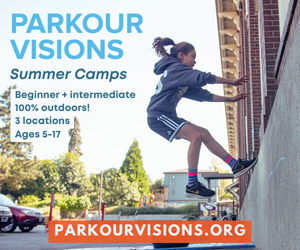Portland Mom Collective is committed to sharing resources and information with families living in the PDX area. In our Q + A Sessions series, we talk to local experts in their fields about common topics relevant to our readers.
In this session, we discuss food allergies in children with our partner, Dr. Sanjeev Jain, renowned allergist and immunologist and CEO of Columbia Allergy. Dr. Jain shares with us what we need about signs and symptoms of food allergies in children, how to test for allergies, and options for treatment.
Dr. Sanjeev Jain, MD, PHD, FACAAI, is a renowned immunologist and allergist, as well as founder and CEO of Columbia Allergy. With 12 clinics throughout the Pacific Northwest, Columbia Allergy is the leading center for allergies and asthma in our region.
Dr. Jain, is double board-certified in allergy and immunology and internal medicine. At Columbia Allergy, his team specializes in Oral Immunotherapy (OIT) and was the first to desensitize patients to many different foods including coconut, garlic, shrimp, fish, oat, and buckwheat. Read more about Dr. Jain’s background and expertise here.
PMC: Hi everyone. My name is Lee Ann Moyer, and I am the owner of Portland Mom Collective. I am here with Dr. Sanjeev Jain. We’ve done a couple Q + A’s now, but, Dr. Jain, would you mind introducing yourself for people who might not have seen them?
Dr Jain: Yes, so my name is Sanjeev Jain. I am a physician at Columbia Allergy, I am an allergy specialist and we particularly focus on food allergy treatment and diagnosis. We have multiple offices in Washington, Oregon, California, and Idaho. In the Portland region itself, we have five clinics, so we’re readily accessible to whoever wants to work with us.
PMC: Thank you so much for joining us. Given your specialty, we’re talking about food allergies in kids. So, I know that this is a growing phenomena, right? We’re noticing it more and more in kids these days, am I right about that?
Dr. Jain: Yes, we appear to have an increased incidence of food allergies and the trend has been going in that direction for the last 20+ years so its not just our perception, I think it is very really that food allergies are going up in kids.
PMC: Hopefully some parents who have questions about food allergies in their kids can get some information out of this little question and answer we’re going to do. So, are you ready for some questions that we’ve got?
Dr. Jain: I think I am, yes!
PMC: Great. So the first question is pretty straightforward. If a parent thinks their kid might have a food allergy, what are the symptoms they might see and at what point should they seek medical care?
Dr. Jain: yes, so I think any child who is having symptoms of allergies, especially after ingestion of food, they need to seek medical care. Not only to manage the symptoms but also to come up with the explanation of what food might be causing the problem. And so, the typical symptoms we see are hives, which are raised red rashes that can be throughout your body and they are transient, mean ing they come and go, but they are not at one location for extended periods of time, and are typically very itchy. If you have those types of hives, that’s a sign that the person is having an allergic reaction to something. The other thing that we are concerned about are breathing problems, some people can have wheezing. If someone has asthma then of course that may be a reason for wheezing, but sometimes a food allergy reaction can also cause wheezing. The other common symptoms we might see would be caught, vomiting, abdominal pain, in some cases one may even have diarrhea, so any gastrointestinal symptoms, we need to consider food allergies as a possible cause of that. Any kind of skin rash, we need to consider as a possible cause of food allergy, and then, the worst or most severe type of reaction is what we would call anaphylaxis, where there are multiple organ systems involved and there may be light-headless or somebody is about to faint, that is a very serious condition, and one needs to call 911 right away if something like that is happening.
PMC: So, you mentioned this that they should come in and find out what might be causing the reaction, so how does somebody do that? What happens at the office to determine the food that’s causing it?
Dr. Jain: Yeah, so for us the most important part of our evaluation is just taking a really detailed history in terms of what exposures happened, when they happened, so what was the time sequence of events. We also look at statistics: somebody has a food such as peanut butter, you know, peanut is a bigger suspect in our mind than wheat or other ingredients in the bread. Although, wheat, egg, dairy, they are all very common allergens so we have to expand our investigation to make sure we’re not missing anything.And then, once we know that, we can perform blood testing as well as what we call skin prick testing to see what shows up in those tests. But, no test is 100% reliable, and so many cases, if we’re not sure what causes the reaction, we may also do what we call oral challenges, where we would very systematically and very carefully administer the food that we are suspecting is a potential causes of the reaction and so food challenges are considered sort of the gold standard in allergy testing when everything else is not giving the answer, that’s what we would use to try to come up with an answer of what caused the reaction.
PMC We had a little moment where the connection blipped out, and so in that moment you said that skin prick testing is the most reliable or not the most reliable?
Dr. Jain: It is quite reliable, however, it is not 100% reliable so for that reason, the gold standard in allergy testing is what we call an oral food challenge where we actually have the person ingest that food in our office in a very systematic way. It’s a multi-step process where initially we give a very small amount of that food, we observe the person very, very carefully, then maybe half an hour later, we give a slightly higher amount, and observe some more. And so it takes maybe three or four hours to do an oral challenge but we would conduct it in the office for safety reasons.
PMC: Yes, and full disclosure, I have been in there with one of my children doing that, and it is a long process but it is very carefully monitored. There are people every step of the way. So for parents who might find that initimidating or scary it is comforting to know that it is under a lot of supervision.
Dr. Jain: Yes.
PMC: So let’s imagine that a child gets diagnosed with a food allergy, how can parents prepare for — obviously you can try to avoid something that might cause a reaction — but how do parents prepare for moments when they’re not around? Let’s say a sleepover, or even school, camps, those kinds of things, where a kid might risk exposure?
Dr. Jain: Yes, so it is a difficult thing to do, no doubt about it. But, the parent needs to talk to all the caregivers of that child to make sure everybody is aware of the child’s food allergy. And, many parents just choose to provide all the meals for the child and instruct the caretaker to make sure that the child is not eating any other food other than what is prepared by the parents. That would be a very good way of ensuring safety. But, it depends on individual situations. You know, certain foods are easier to avoid than others. You know, we see people with allergies macadamia, and, in general, it’s easier to avoid than something like dairy, which is much harder to avoid. So, it does depend on the allergy itself.
PMC: Yeah, that was my next question was if there are some foods that are at higher risk of accidental exposure than other foods. So, what are some that are high-risk of accidental exposure? You mentioned dairy.
Dr. Jain: Yeah, I think dairy is by far the hardest food to avoid. It’s everywhere. It’s in lots of hidden places. Egg is another which is hard to avoid, you can’t buy any baked good which doesn’t have egg unless clearly specified, so egg is really difficulty. Wheat and other grains are also somewhat hard to avoid, you know, people don’t realize that soy sauce has wheat in it. And so, there are hidden sources of wheat as well. These days, nuts are actually easier to avoid just because of greater awareness in the society about nut allergies. In the past, peanuts – for accidental exposure – used to be very common, but these days, you know, all the airlines and everybody is aware. But, even then, you know, peanut is also very common in lots of different places and it is hard to avoid. Yeah, so, many foods are difficult to avoid, and so that’s why one needs to be vigilant and be sure that one is not getting accidental or unrecognized exposure to these foods.
PMC: Yeah, it is challenging for a lot of people. So, let’s talk a little bit about treatment. What are the options fo kids with allergies – or adults – with food allergies, as far as treating the allergy itself?
Dr. Jain: Yeah, so, for the longest time, the conventional approach in managing food allergies was just, you know, strict avoidance of that food, reading labels carefully, and carrying an epi pen. And, that works in many situations, but, as we have just mentioned, it is hard to avoid accidental exposures to happen with many of these foods. And so that’s why, since 2007, we have been working on different protocols for desensitization of different foods that the person might be allergic to. So the basic desensitization process is: we give a microscopic amount of that food initially, and then gradually go up on the amount until one reaches what we call maintenance dose. In the process of building up to the maintenance dose, the body develops tolerance to that allergen. And so, we were earlier talking about an oral challenge. An oral challenge is a test where we perform a test over a matter of let’s say 3-4 hours. In desensitization, what takes 3-4 hours in the challenge takes maybe six months. And so, what that means is, we’re pretty much doing the same thing as when we’re doing an oral challenge, but doing it much much more gradually. And so that’s the fundamental difference between desensitization and a challenge. A challenge is a test, desensitization is a treatment, and hat treatment then allows an individual to be exposed to the food they’re allergic to without causing a reaction to that food.
PMC: Right, and so, they have — you said it takes around six months to do part of of it, and then, are they able to then, in theory, eat the allergen safely?
Dr. Jain: Yeah, so, we look at this desensitization process in multiple milestones. For us, the first milestone is cross-contamination protection. And so that milestone is achieved almost 100% of the time with the different treatment protocols we have developed over the last 15 years or so. And, the second milestone is what we would call bite-proof protection, and that is sort of a vague term but it basically means that if someone has, let’s say, a peanut allergy, and they have one to eat, a bite of a candy which has peanut or a bit of peanut butter sandwich or something, they won’t have a reaction to that. And so typically, when people reach what we call the maintenance dose in our desensitization program, then at that time they would have what we call bite-proof protection in those cases. For many parents, that’s adequate, that’s all they want because consuming that food is not as important to them as safety. And if so, that is their primary goal, we may not pursue anything more than that. But, especially with staple foods such as dairy and wheat and egg and those kinds of things, people do want to introduce it in their diet. And, of course, depending on individual preferences, there are kids who want to introduce nuts in their diet, seafood in their diet, or whatever the situation might be, in which case we’ll move forward with other milestones that we want to achieve. So for us, the third milestone is what we would call free-eating status, where they can eat as much of that food as they want to without having a reaction. For us, typically, free-eating status can be reached within a year or so of reaching that previous status which we call bite-proof protection. But, even free-eating status is not cured for the food allergy. So the last milestone which we talk about is sustained tolerance, where, you truly develop tolerance to that food so that you don’t have to eat it every day, you reduce the frequency, get exposure every once in a while and that’s adequate to maintain your tolerance. So, before one reaches that sustained tolerance status, one needs to consume that food every day or every other day to maintain that tolerance. So, those are the four different milestones that we try to achieve during a desensitization process. So, the short answer is, yes, if somebody really wants to introduce that food into their diet, after desensitization, that is very achievable. Although, not everybody gets there for various reasons.
PMC: Ok, excellent. Hopefully that’s given families some ideas about what they can do if they suspect or know their child has food allergy. IF they are are interested in contacting you or any of your clinics, where should they go?
Dr. Jain: Yes, so we have our website, it’s called www.columbiallergy.com. They can go on that website and they can search for the location that is closes to them and then we can provide service to them at that location.
PMC: Excellent. Thank you so much for sharing all of your knowledge with us today.
Dr. Jain: Thank you so much.
The information on this website is not intended or implied to be a substitute for professional medical advice, diagnosis, or treatment. All content, including text, graphics, images, and information, contained on or available through this website is for general information purposes only. Always seek the advice of your physician or other qualified health care provider with any questions you may have regarding a medical condition or treatment and before undertaking a new health care regimen. Never disregard professional medical advice or delay in seeking it because of something you have read on this website.

















